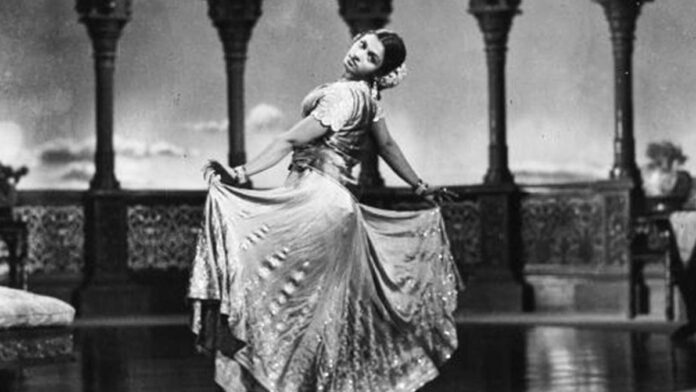
T.R. Rajakumari in “Chandralekha” (1948), produced by Gemini Studios
| Photo Credit: The Hindu Archives
April 8 marked the platinum jubilee of the iconic film Chandralekha, which released on this date in 1948. Gemini, the studio that produced it, folded up in the 1970s. S.S. Vasan (of Gemini Studios), who also directed the film, died in 1969. The star cast and the technicians are all forgotten, except perhaps in serious studies of Indian cinema. And yet Chandralekha is remembered. Even those born decades later will associate the film with its famous drum dance sequence. The Encyclopaedia of Indian Cinema by Ashish Rajadhyaksha and Paul Willemen classifies Chandralekha as “one of India’s most famous films.” More significantly, it was the first film produced in South India to become a hit across the country.
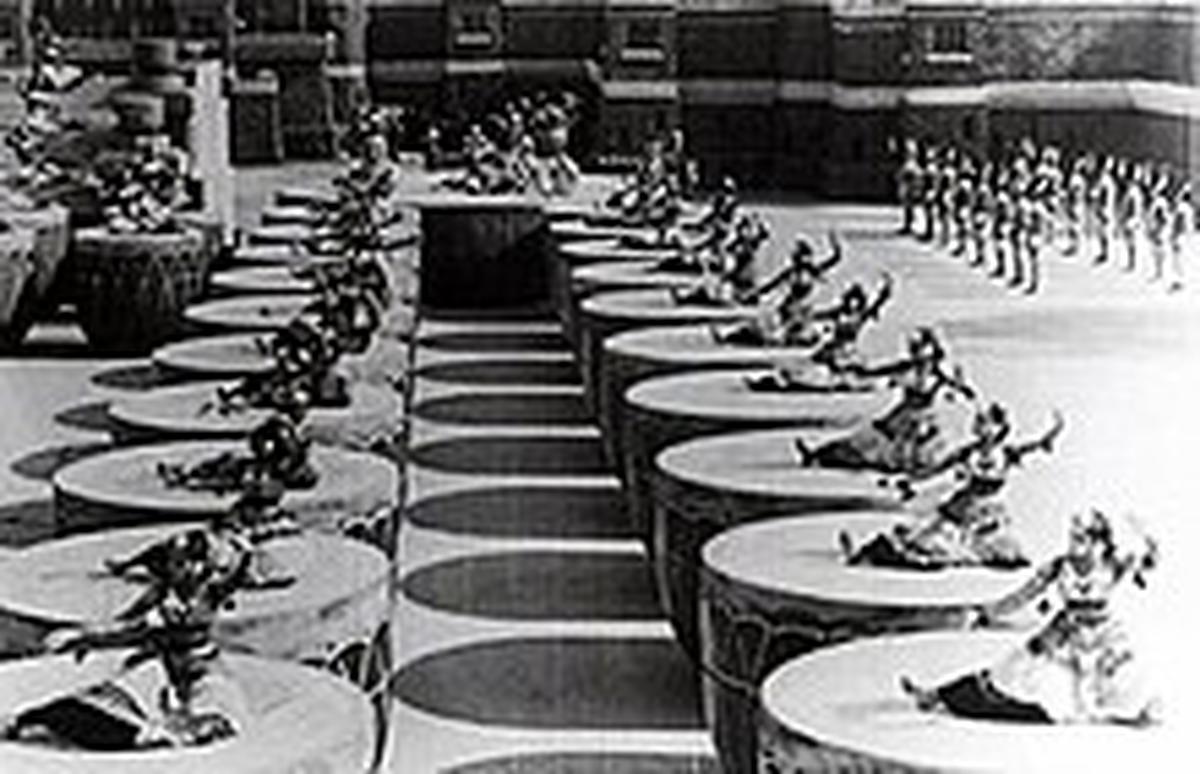
Drum dance sequence from the 1948 Tamil film ‘Chandralekha’
| Photo Credit:
Special arrangement
More than five years in the making with a mega-budget (it cost Rs 30 lakhs then), Chandralekha was a do-or-die attempt for Gemini and its proprietor. And yet, Vasan did not think twice before spending lavishly on a publicity campaign that preceded the film’s release. Full-length ads in all the leading dailies and trade journals of the country, and a word-of-mouth campaign by Gemini’s publicity department created such a buzz that would have beaten present day social media campaigns. And yet, the film’s Tamil version did not have a great opening. It would have remained just successful, but not a cult, movie had it not been for Vasan’s next idea — releasing a dubbed Hindi version.
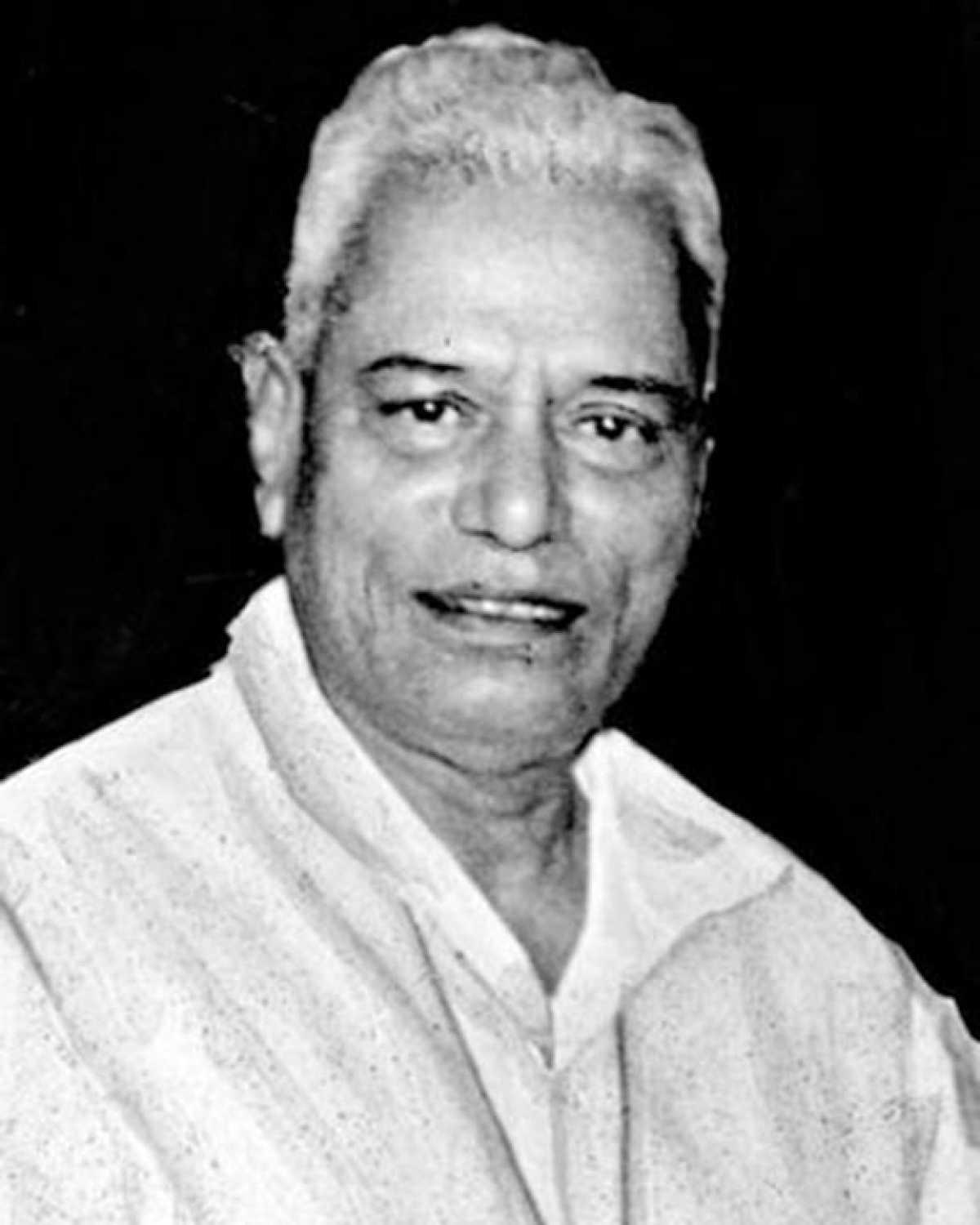
Director S.S. Vasan
Perfect timing
Released nationally in December 1948, the Hindi version was a mega success. It differed slightly from the Tamil original — N.S. Krishnan and T.A. Mathuram did not feature , and the songs of the heroine T.R. Rajakumari were not in her voice but were sung by Uma Devi, better known in later years as the comedienne Tun Tun. But it was the timing that really mattered. Unlike the South, the rest of India had been hit hard by Partition. A riot-weary audience was quite happy to lose itself in around three hours of a Ruritanian fantasy. The story line was not new — two brothers of a royal family, one good, the other evil, both interested in the same girl, lots of twists and turns, and finally good triumphing over evil after a spectacular climax, all aided by what can be termed world music. There have been numerous remakes of the same — even Bahubali is just this story if you look at it closely.
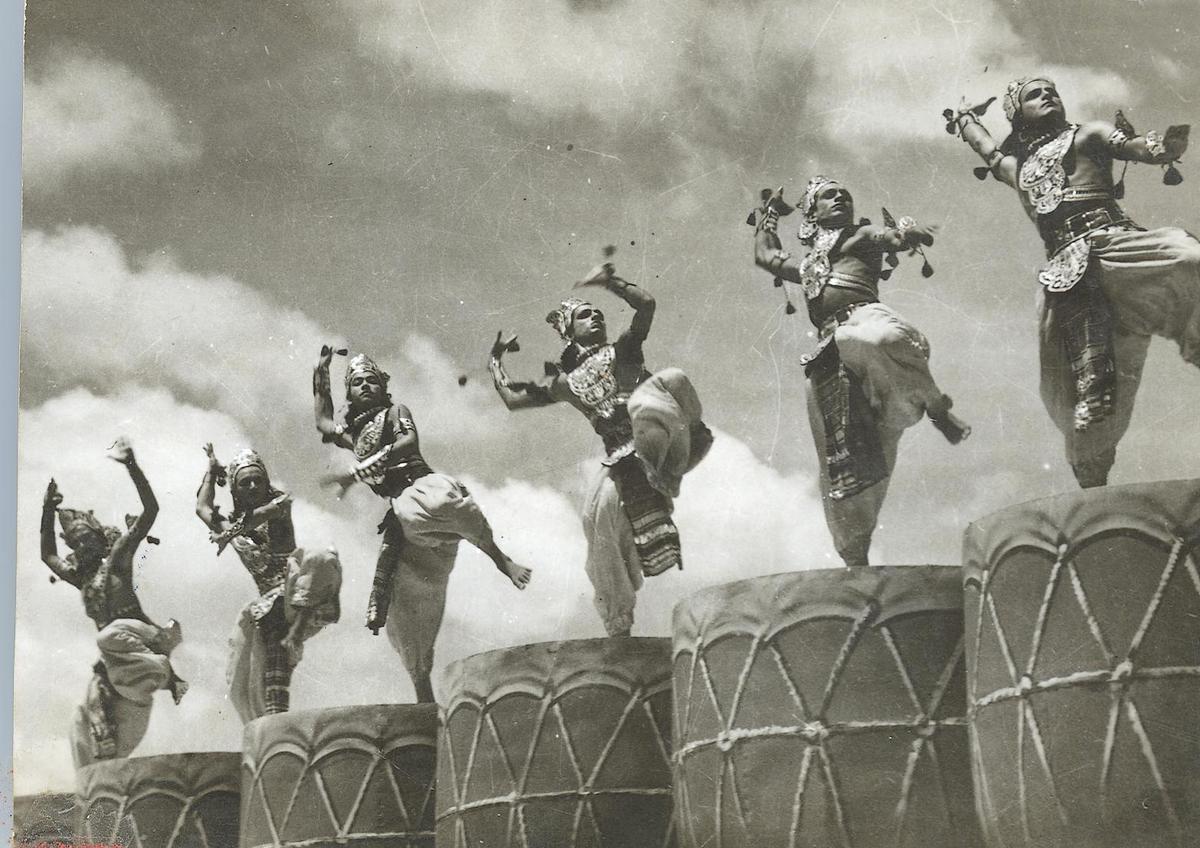
Drum dance in the film Chandralekha.
| Photo Credit:
The Hindu Archives
Rajadhyaksha and Willemen attribute Chandralekha’s success to its “aggressive redefinition of entertainment mobilised Hollywood-style orientalism” and say that it set the trend “in the codification of an Indian mass entertainment ideology after Independence.” Cult films would come again and again in Indian cinema and yet the mandates of Hollywood-style orientalism and mass entertainment ideology would never change. Encouraged by the success of his Hindi version and by then a national figure in film making, Vasan also releases a shortened version of Chandralekha in English, titled Chandra. Predictably, it did not do well and as Ashokamitran wrote tongue-in-cheek years later, the English version was perhaps Vasan’s enormous joke on the Indian audiences.

A scene from the film Chandralekha
| Photo Credit:
The Hindu Archives
Commercial success
Over the decades, estimates of what the film grossed have widely varied. But Vasan himself gave the details in a speech that Ashokamitran documents. It gives us an idea of the commercial side of films at that time. Chandralekha ran for four years and grossed four crores. Of this Rs 1.5 crores went as entertainment tax and Rs. 1.25 crores went to the theatres and distributors. Advertising had cost Rs 25 lakhs and a similar amount went in other taxes. That left Rs 75 lakhs out of which financial costs by way of interest on money borrowed took away a huge chunk. The producer, said Vasan, meaning himself, was left with a few lakhs. Was it worth all the alarums and excursions, he asked.
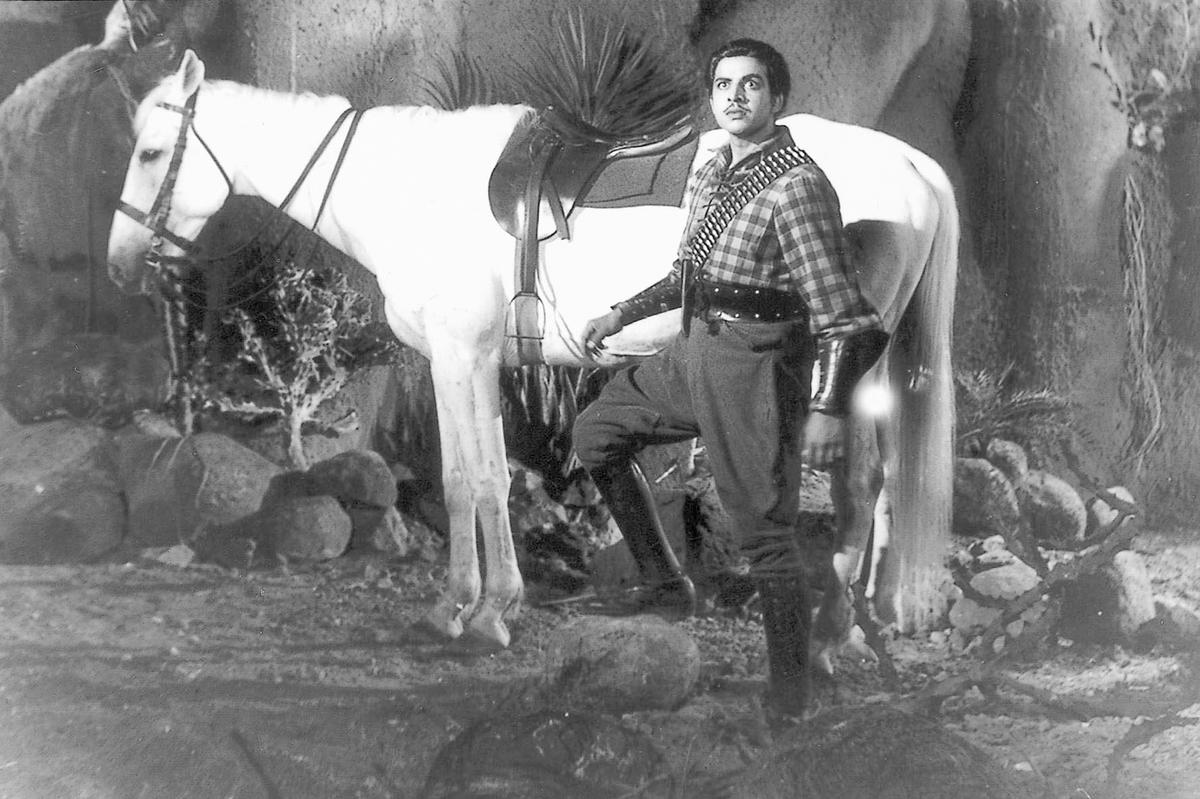
A scene from the 1948 film Chandralekha.
| Photo Credit:
The Hindu Archives
There may have been an element of exaggeration in the claim but there is no denying that this was not the bonanza that people claimed it was. But its intangibles were many — an entire ecosystem, that of cinema, survived, for 1947/48 was a bad year with many stars, technicians and others migrating to Pakistan. The South, as A.V. Meyyappan wrote, became recognised as a centre for filmmaking afte r Chandralekha and he and other studio owners of Madras began making films in Hindi. That in turn promoted a pan-Indian culture. Today’s PS, RRR and Bahubali are all in a way standing on the shoulders of Chandralekha. Vasan was undoubtedly the pioneer, and his film deserves to be remembered just for that.
#Vasans #Chandralekha #released #years #set #panIndian #trend
